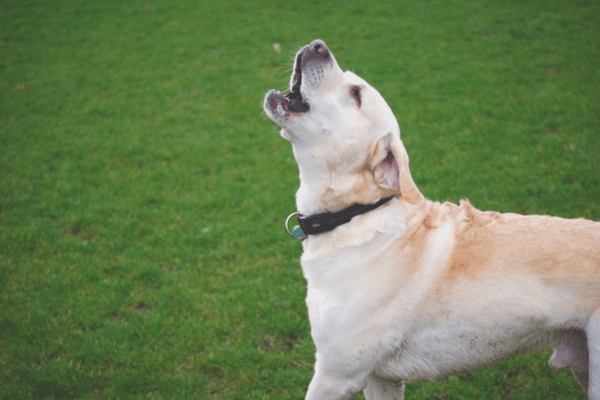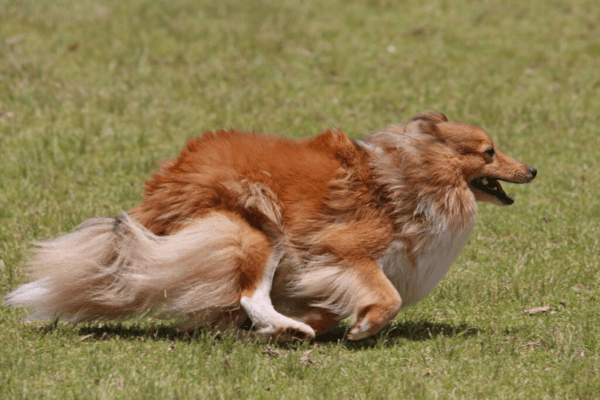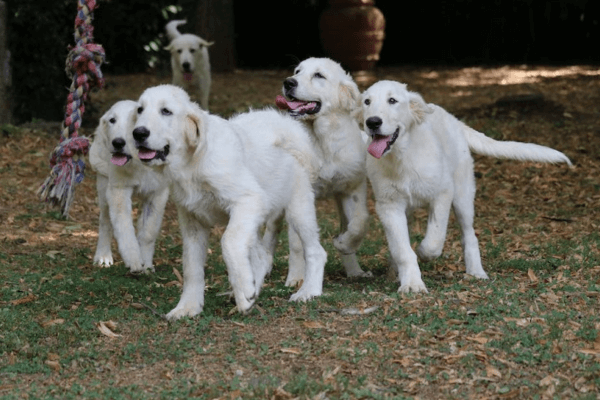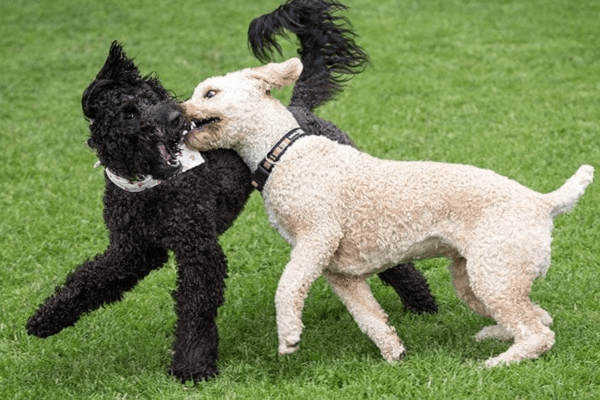In the realm of canine behavior, the phrase dogs gone wild has become a popular idiom to describe instances in which dogs exhibit unruly or disruptive behaviors. This phenomenon can be perplexing and concerning for dog owners, as it often disrupts the harmony within their households and may pose risks to both human and animal welfare.
Understanding the root causes of such wild behavior is crucial in order to effectively address and manage it. This article aims to explore the underlying factors that contribute to dogs gone wild and provide practical strategies for alleviating these behaviors.
By establishing a structured routine and environment, promoting socialization and positive reinforcement, managing triggers, reducing excitement levels, as well as seeking professional help when necessary, dog owners can better navigate these challenging situations.
Ultimately, by applying evidence-based approaches, we can strive towards creating safe and harmonious environments for both dogs and their human companions.
Key Takeaways
- Positive reinforcement training is effective in promoting calm behavior in dogs.
- Seeking professional help is crucial for addressing complex behavioral issues in dogs.
- Choosing the right trainer who uses positive reinforcement techniques is important.
- Alternative therapies, such as acupuncture and aromatherapy, can help reduce stress and promote relaxation in dogs.
Understanding the Root Causes of Dogs Gone Wild Behavior
The examination of the root causes of wild behavior in dogs provides valuable insights into understanding their innate instincts and environmental triggers. Understanding canine psychology is crucial in comprehending why some dogs exhibit wild behavior. Canine psychology explores the mental processes and behaviors of dogs, enabling us to gain a deeper understanding of their emotional states and cognitive abilities.
One important factor contributing to wild behavior in dogs is genetic predispositions. Genetic factors play a significant role in shaping a dog’s temperament and behavior. Certain breeds have been selectively bred for specific traits that may contribute to more assertive or aggressive behaviors. For example, breeds like German Shorthaired Shepherds and Rottweilers are known for their protective instincts, which can sometimes manifest as aggression if not properly managed.

In addition to genetic predispositions, environmental triggers can also influence wild behavior in dogs. Factors such as inadequate socialization during puppyhood, lack of exercise or mental stimulation, inconsistent training methods, or traumatic experiences can all contribute to unruly behavior. Dogs are highly sensitive creatures that respond strongly to their environment, so it is essential to provide them with appropriate care and training.
Understanding these root causes helps us develop strategies to prevent or address wild behavior in dogs effectively. By incorporating positive reinforcement techniques, providing proper socialization, and addressing any underlying psychological issues through professional help if necessary, we can help guide our canine companions towards balanced and well-behaved lives.
Establishing a Structured Routine and Environment
Establishing a structured routine and environment is crucial for ensuring well-behaved and disciplined behavior in canines. Creating a calm atmosphere is essential as it helps dogs feel secure and reduces anxiety, which can contribute to wild behavior. Consistency in training is also key, as dogs thrive when they know what to expect and understand the boundaries set for them.
To create a calm atmosphere, it is important to provide dogs with a designated space that is free from distractions and noise. This could be a specific room or area in the house where the dog can relax and feel safe. Additionally, incorporating calming elements such as soft bedding, soothing music, or diffusing calming scents like lavender can help create a peaceful environment.

Consistency in training involves establishing clear rules and expectations for the dog’s behavior and consistently reinforcing them. This includes using positive reinforcement techniques such as rewards and praise when the dog displays desired behavior, while also redirecting or ignoring unwanted behaviors without resorting to punishment or aggression.
In order to maintain consistency, all members of the household should be on board with the training plan and follow the same guidelines. Regular training sessions should be scheduled throughout the week to reinforce commands and teach new skills.
By establishing a structured routine and environment that creates a calm atmosphere and emphasizes consistency in training, dog owners can effectively address wild behavior in their canine companions.
Socialization and Positive Reinforcement
Socialization and positive reinforcement are crucial elements in shaping a well-behaved and balanced canine companion. Dog training techniques that focus on behavior modification through positive reinforcement have been widely acknowledged as effective means to modify unwanted behaviors in dogs. Positive reinforcement involves providing rewards or treats to reinforce desired behaviors, thereby increasing the likelihood of their repetition.

When it comes to socialization, early exposure to various people, animals, and environments is essential for dogs to develop the necessary skills to interact appropriately with others. This helps prevent aggression or fear-based reactions towards unfamiliar situations. The table below illustrates some key aspects of socialization and positive reinforcement in dog training:
| Aspect | Socialization | Positive Reinforcement |
|---|---|---|
| Definition | Exposing dogs to different people, animals, etc. | Rewarding desired behaviors with treats/rewards |
| Benefits | Reduces fear/aggression | Increases likelihood of desired behaviors |
| Techniques | Controlled interactions | Treats/praise |
| Importance | Develops appropriate social skills | Encourages learning and motivation |
By incorporating these techniques into dog training programs, owners can effectively shape their canine companions’ behavior while promoting a harmonious relationship between humans and dogs. Furthermore, by focusing on serving others through responsible pet ownership practices, individuals can contribute positively to society by fostering well-behaved dogs that bring joy and companionship to their communities.
Managing Triggers and Reducing Excitement
To effectively manage triggers and reduce excitement in canines, it is important to examine the validity of the theory that certain environmental stimuli can elicit undesired behaviors. This theory suggests that dogs may become overstimulated by various factors in their environment, leading to heightened levels of arousal and potentially unwanted behaviors. By understanding these triggers and implementing appropriate calming techniques for dogs, owners and trainers can help prevent or minimize such negative outcomes.

To manage triggers and reduce excitement in dogs, here are four key strategies:
- Provide a safe and quiet space: Dogs should have access to a designated area where they can retreat when feeling overwhelmed or anxious. This space should be free from potential stressors and equipped with comfort items like bedding or toys.
- Practice desensitization: Gradually exposing dogs to triggering stimuli under controlled conditions helps them become more accustomed to these situations. This process involves starting at a low intensity level and gradually increasing exposure over time.
- Engage in calming activities: Activities such as massage, aromatherapy, or playing classical music have been found to promote relaxation in dogs. These techniques can be incorporated into daily routines to help manage overstimulation.
- Use positive reinforcement training: Rewarding desired behaviors with treats or praise helps reinforce calm behavior while reducing excitement levels. Consistent use of positive reinforcement encourages dogs to remain calm even in stimulating situations.
By employing these strategies, dog owners can effectively manage triggers and reduce excitement levels in their pets, promoting a harmonious living environment for both humans and animals alike.
Seeking Professional Help and Support
Seeking professional guidance and support can be critical in effectively addressing complex behavioral issues and ensuring the well-being of both dogs and their owners. When dealing with dogs gone wild, finding the right trainer is essential. A skilled and experienced trainer can assess the dog’s behavior, identify triggers, and develop a tailored training plan to address specific issues. It is important to choose a trainer who uses positive reinforcement techniques rather than punishment-based methods, as this promotes a healthier relationship between the dog and its owner.
In addition to traditional training methods, exploring alternative therapy methods can also be beneficial. These may include acupuncture, massage therapy, or even aromatherapy for calming anxious dogs. Alternative therapies can help reduce stress levels in dogs and promote relaxation.
To assist readers in understanding the benefits of seeking professional help and support for managing canine behavioral issues, the following table provides an overview of different types of professionals who specialize in dog behavior:
| Professional | Description |
|---|---|
| Certified trainers | Experts in using positive reinforcement techniques |
| Veterinary behaviorists | Veterinarians with advanced knowledge of animal behavior |
| Animal behaviorists | Specialists who study animal behavior |
| Dog psychologists | Professionals who focus on understanding dog psychology |
By seeking professional help from these experts, dog owners can gain valuable insights into their pet’s problematic behaviors and learn effective strategies to manage them.
See Also:
- The Ultimate Guide to the Weimaraner German Shepherd Mix
- American Dog Breeds: Uncover the Finest Canine Companions
- Black and White Dog Breeds: Be Careful! They May Capture Your Heart
- How Many Dog Breeds Are There?
Conclusion
Understanding the root causes of wild behavior in dogs is crucial for effective management.
Establishing a structured routine and environment helps in providing stability and minimizing unpredictable behaviors.
Socialization and positive reinforcement play a vital role in shaping desirable behavior patterns.
Additionally, managing triggers and reducing excitement can prevent outbursts of wild behavior.
Seeking professional help and support from dog trainers or behaviorists can further aid in addressing this issue.
Remember, taming the wild within our furry friends requires patience, consistency, and a firm hand.
If you can’t find the right dog for you to adopt locally, please consider adopting a dog from Bone Voyage Dog Rescue. We’ll fly with your dog to you.
Frequently Asked Questions
How can I train my dog to stop exhibiting wild behavior?
Positive reinforcement techniques, such as reward-based training methods and clicker training, can be effective in curbing wild behavior in dogs. Consistency in training is crucial to reinforce desired behaviors and avoid confusion for the dog.
Are certain breeds more prone to wild behavior than others?
The tendency towards wild behavior in dogs can be influenced by a combination of genetics and upbringing. While certain breeds may have a predisposition, the impact of environmental factors should not be overlooked in shaping a dog’s behavior.
Can wild behavior in dogs be a result of a lack of socialization?
Early socialization is crucial for dogs as it helps them develop appropriate behavior. Lack of socialization can lead to wild behavior in dogs, while isolation can have negative effects on their overall behavior and well-being.
What are some common triggers that can lead to wild behavior in dogs?
Common triggers for wild behavior in dogs include fear, frustration, and lack of mental stimulation. To manage and prevent such behavior, proper socialization, training, and providing outlets for physical and mental exercise are essential.
When should I seek professional help for my dog’s wild behavior?
Professional help should be sought for a dog’s wild behavior when understanding the underlying causes becomes challenging. Exploring alternative methods to manage this behavior can provide effective solutions and improve the well-being of both the dog and its owner.
